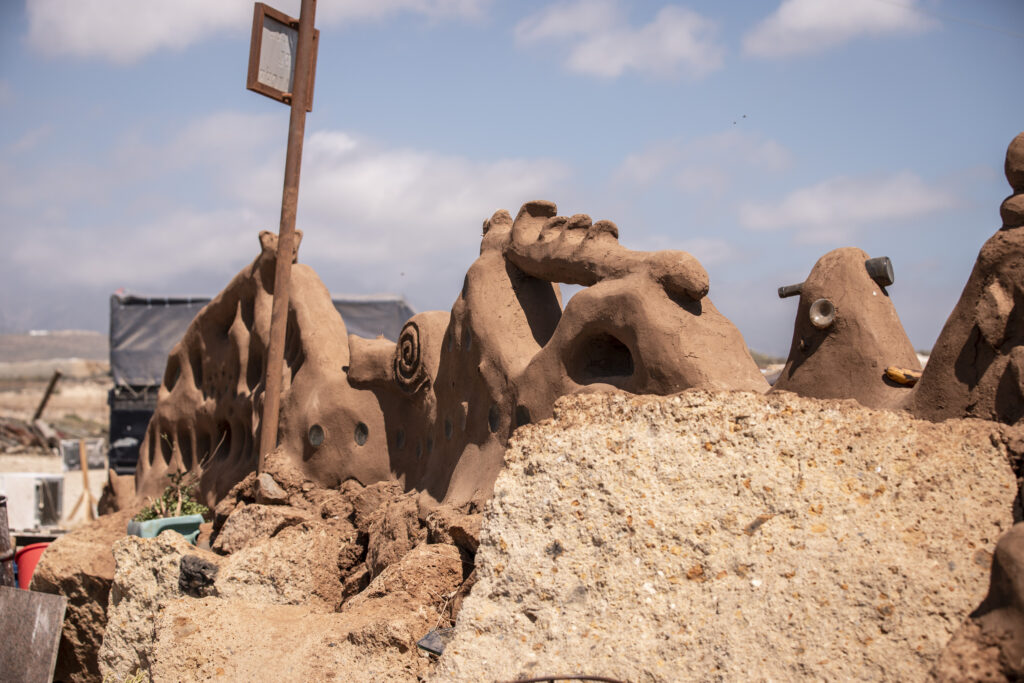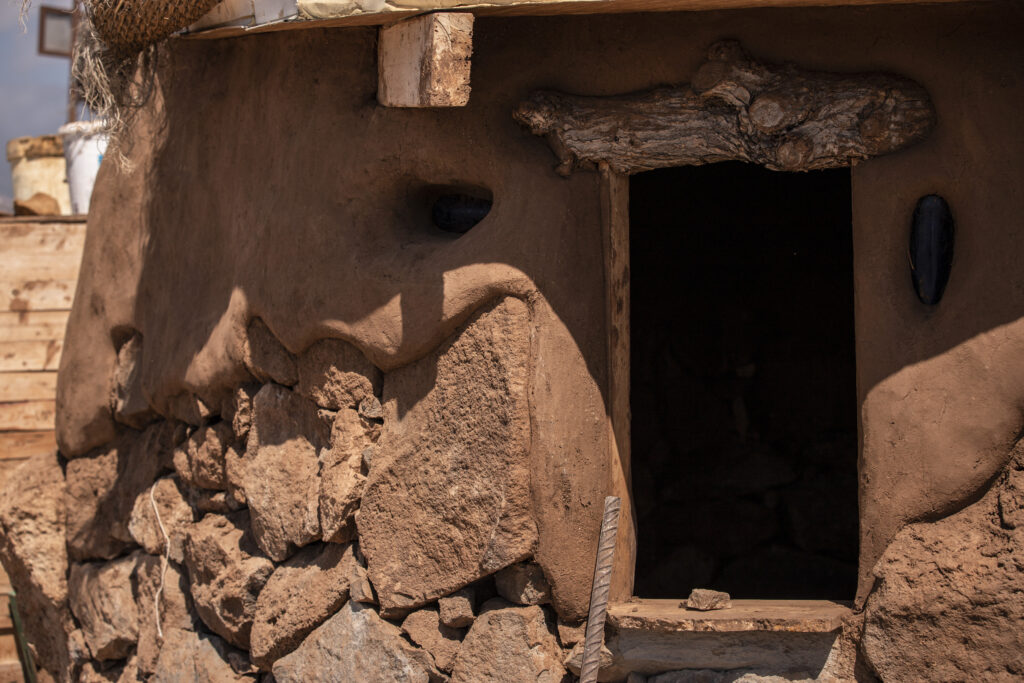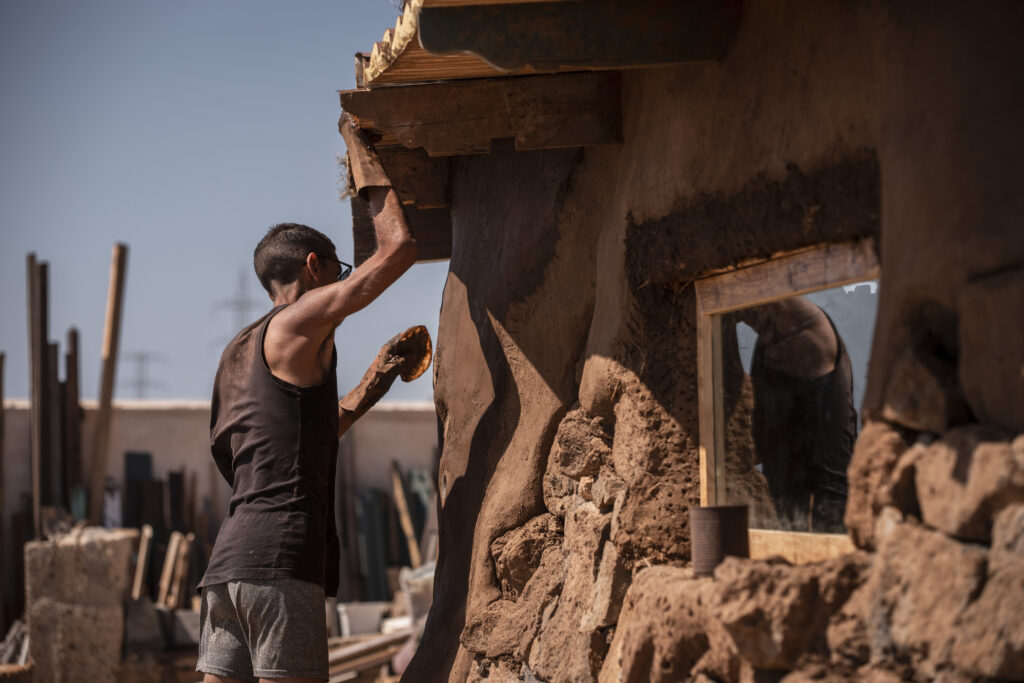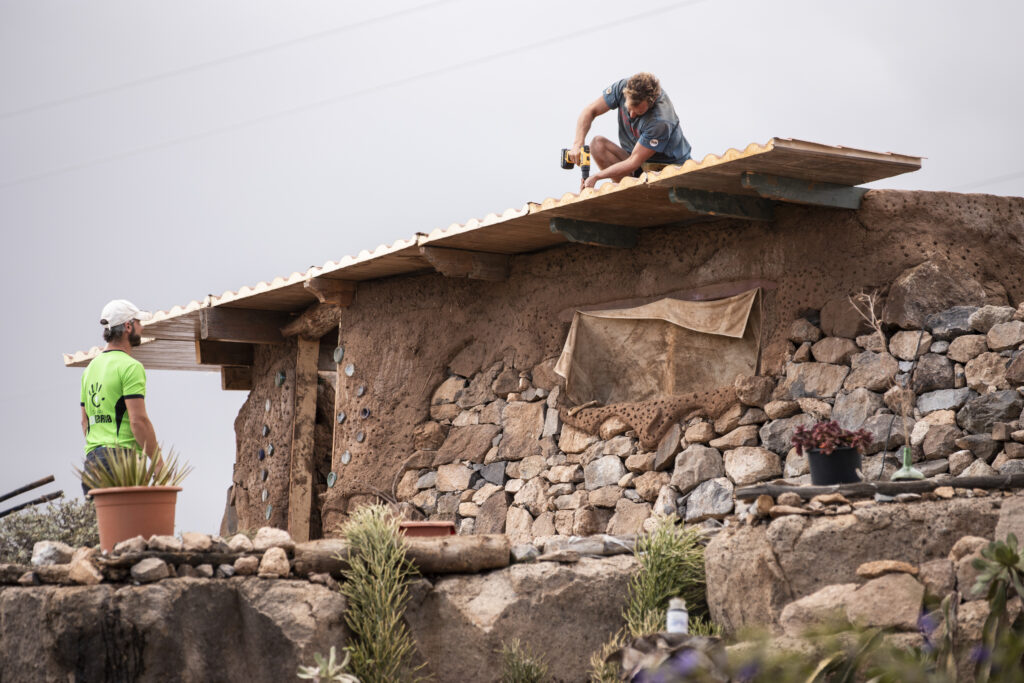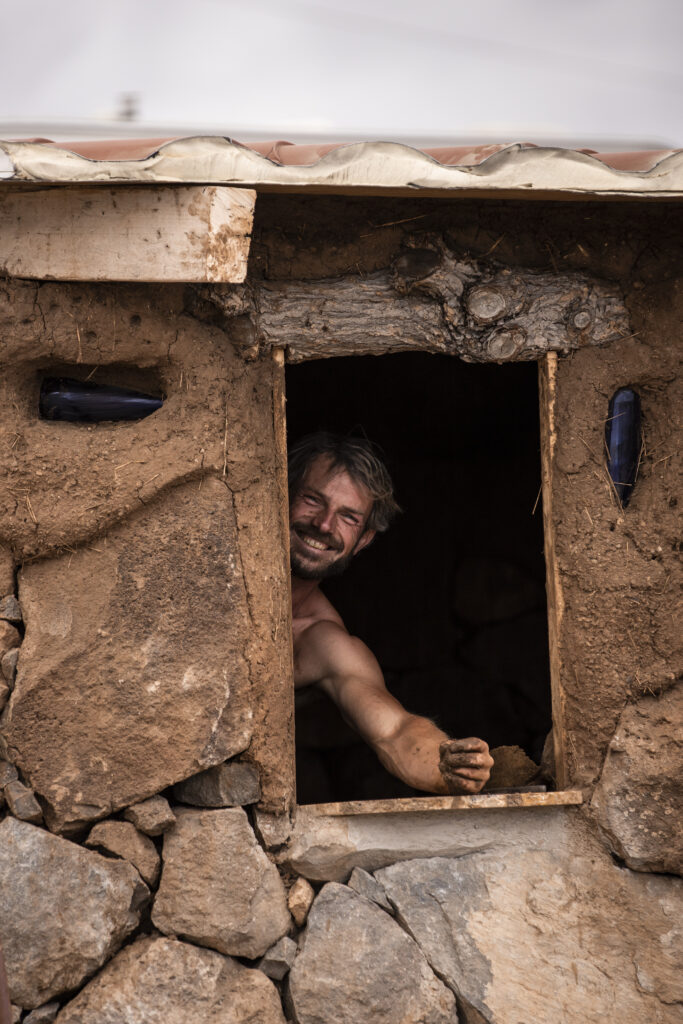How to build natural buildings
How to build natural buildings


How to build natural buildings is this week’s “how to with Lola and the volunteers”
The use of natural building materials is a vital aspect of creating a sustainable and healthy home for people and the environment itself. That’s why in Tenerife Horse Rescue, we focus on learning how to build sustainable with volunteers who are experts in the field. This time, Stephane, a former Tenerife Horse Rescue volunteer, will explain how to build natural buildings, its advantages, different techniques and more.
Stephane (39) grew up in the countryside in the north-east of France and, as he told us, he always loved nature and enjoyed playing with mud. He did many courses and workshops about permaculture. His purpose in life is to become a teacher and participate in building a community based on permaculture.
“When I was 9 years old, I built my first tree cabin alone. Then my interest in permaculture and natural buildings increased about 20 years ago when I discovered the hobbit houses. I fell in love with them! For a while, I was just collecting information, watching videos and reading about it. But then I decided to take it more seriously, form myself and practice all around the world.” — Stephane
k
Permaculture and natural building
Permaculture is a system of agricultural, economic, political and social design principles based on the patterns and characteristics of the natural ecosystem. It has many branches, including natural buildings and eco-design, green engineering, design, construction, and integrated water resources management.
Natural building is the type of building that uses natural materials. But it is not just about that. Its main purpose is to incorporate the building in nature, having the lowest impact of its surrounding environment. In other words, the basis of natural building is the need to lessen the environmental impact of buildings and other supporting systems, without sacrificing comfort or health.
For that, it is essential to use primarily materials that are, abundantly available, renewable, reused or recycled. And above all, you need to use the materials you find around the place you’re building in. Using natural materials which come from hundreds of miles away also makes no sense.
“To know what you can build on your land, just have a look around and see which materials are available and see which techniques were used for the oldest buildings around your place. This will guide you and give you the best building options” –Stephane.
In addition to relying on natural building materials, the architectural design must consider other aspects. Such as the orientation of the building, the utilization of the local climate and site conditions, the emphasis on natural ventilation and alternative wastewater treatment and water reuse. Building natural means also not building in excess. You need to build in a reasonable size to not abuse the use of resources. So if you are a couple living with one kid, you don’t need a 300 square meter house with 6 bedrooms and 4 bathrooms.
Most common materials
As we said before, it’s highly recommended to use materials that you have around your land. So, the materials will depend on the environment you live in. Anyway, the most common natural materials you can use are: soil, sand, clay, straw, hemp, wood, rocks, bamboo, cow poop, snow, or even ice. Stones are really useful to make a strong basis. Then, with a mix of clay, soil, sand, straw, and water you can build strong and stable walls. You just need to mix these materials in a proportion that you can see the mixture is compact.
The wood for example is an excellent material to make the door and windows. There are also different techniques depending on the materials you have. Some of them are: straw bales, cob, earth bags, light straw clay, rammed earth, cordwoods, and adobe.
“In my experience in Tenerife Horse Rescue we used cob and stones because these were the materials that the environment provided us. But if you live in a place with a lot of bamboo plants or even snow, then the construction will change completely”. Stephane.
Main points to take in consideration
- First you have to find out which materials you have in your land
- Then you have to create a design for the place. To do it properly it takes at least a year because you have to observe all the environmental impacts from the sun, wind, rain, animals and plants, in the four seasons.
- Adapt your building to protect it from climate.
- Try to use natural resources to acquire energy: passive heating from the sun, solar panels and wind turbines.
Limitations of natural buildings
There are some limitations at the moment of making natural buildings.
First, it is a really hard job, and it takes more time than normal buildings.
Also, these techniques are hard to apply for very big buildings. Anyway there are several examples of huge natural buildings such as The Chinese wall (rammed earth and rocks), Nepalese and Japanese temples (wood), entire cities in Yemen (adobe and rammed earth), the pyramids in Egypt and the Mayan pyramids (rocks).
But the biggest limitation is that for now it is really complicated to get permission from the government for natural buildings. Although, now more and more architects begin to get interested in it and hopefully the laws will change soon.
Advantages of living in a natural building
Living in a natural building is an amazing experience. The feeling is entirely different from living in a normal house.First, the natural buildings let vapour come in and out. It’s like natural breathing. This works as a natural regulator of the humidity in the house.
Moreover, the walls keep the heat during the day and release it during the night, maintaining the perfect temperature every day, during the whole year. The fact that most of the buildings are not square, or at least the corners are rounded, permits a better circulation of energy.
“It’s really healthier to live in a natural building. Most natural buildings are self built. And also choosing to build natural buildings generally is accompanied by a whole new and natural lifestyle. It’s not the easiest job, but fully worth it.” — Stephane.
Cob construction in Tenerife Horse Rescue
In Tenerife Horse Rescue, we built a house fully with sustainable materials. We used stones as the basis of the house and then we made the walls with cob. Cob is the mixture of clay, soil, sand, straw, and water. After mixing the materials and finding the perfect consistency, you need to make bricks with it and start building the wall. Then you can give the shape that you want with your hands. The good thing about cob is that you can always fix the design. You can remove and add as many times as you want. Moreover, you can add glass bottles to make nice designs and decorate the walls.
We also used recycled wood for the beams in the ceiling, the door, and windows. For that, you need to have basic knowledge about construction. The foundation is the same as any other construction.
“It was a fully sustainable building, we used every material the environment provided us with. It was a hard job but a really nice experience and teamwork. I’m really happy with the result.” — Stephane

Giving to us on a regular basis means that not only can we keep you completely in the loop as to where your money is going, and how it is being used to do good, but we will also assign you your own personal log in details to receive insider information about our project and our plans. You will be informed first of all updates, allowing you to be a closer part of our journey with us.





